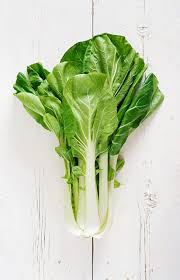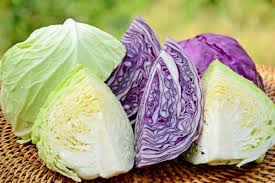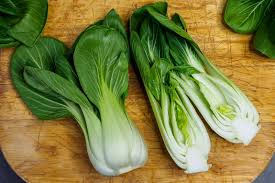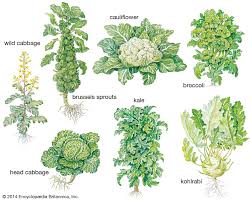Cabbage history dates back thousands of years, making it one of the oldest cultivated vegetables in the world. This leafy green, which belongs to the Brassica genus, has its origins in Europe and Asia.
Archaeological evidence suggests that wild cabbages were being gathered and consumed by humans as far back as 4000 BCE. The early forms of cabbage were leafy greens that were not cultivated but were instead foraged from the wild. Over time, humans began to select and cultivate these wild plants, leading to the domestication of cabbage.
The ancient Greeks and Romans were among the first to recognize the value of cabbage as a food source. They not only consumed it but also celebrated its medicinal properties.
Cabbage was frequently mentioned in the works of Greek philosophers like Hippocrates, who acknowledged its health benefits, and later by Roman scholars such as Pliny the Elder, who praised its ability to heal various ailments. The Romans took cabbage with them as they expanded their empire, spreading its cultivation throughout Europe.
During the Middle Ages, cabbage became a staple food in Europe, particularly in regions with colder climates where other vegetables struggled to grow. Its ability to thrive in poor soils and harsh weather made it an essential crop for sustaining communities.
Cabbage was often pickled and fermented, which allowed it to be stored for long periods, providing nourishment during the winter months. The practice of fermenting cabbage gave rise to sauerkraut, a dish that has become synonymous with German cuisine.
As trade routes expanded during the Renaissance, cabbage began to spread beyond Europe. It was introduced to the Americas by European settlers in the 16th and 17th centuries. The adaptability of cabbage made it suitable for various climates, and it quickly became a popular crop in the New World.
Farmers in North America began to cultivate different varieties, contributing to the diverse cabbage landscape we see today.
Throughout the centuries, numerous varieties of cabbage have emerged, each adapted to specific climates and culinary preferences. For instance, green cabbage, red cabbage, and savoy cabbage are among the most common types, each with unique textures and flavors.
Cabbage has played a significant role in the diets of many cultures, often serving as a key ingredient in traditional dishes, from coleslaw in the United States to kimchi in Korea.
Today, cabbage remains a vital part of global agriculture and cuisine. It is cultivated in many countries, with China being the largest producer. The vegetable is valued not only for its nutritional benefits, including high levels of vitamins C and K, but also for its versatility in cooking. Cabbage can be eaten raw, cooked, or fermented, making it a staple ingredient in countless recipes worldwide.
Origin of Cabbage

Cabbage (Brassica oleracea) has a rich history that traces back thousands of years. It is believed to have originated in the Mediterranean region, specifically in areas of Europe and Asia.
Cabbage is a member of the Brassicaceae family, which includes other cruciferous vegetables such as broccoli, cauliflower, and kale. Over time, selective breeding and cultivation have led to the development of various cabbage varieties, including green, red, and savoy cabbages.
Ancient Cultivation Practices
Ancient civilizations cultivated cabbage using traditional agricultural practices. These practices often involved planting seeds in well-drained soil with adequate sunlight. Farmers relied on natural fertilizers like animal manure to enrich the soil, promoting healthy growth.
Harvesting typically took place in the cooler months, as cabbage thrives in temperate climates. The leaves were often handpicked, and the plants were tended to minimize pest infestations. In some regions, cabbages were stored in cool, dry areas to extend their shelf life, allowing for consumption throughout the year.
Cabbage in Ancient Egypt
In Ancient Egypt, cabbage was highly regarded for its nutritional value and medicinal properties. Archaeological evidence suggests that cabbage was cultivated as early as 4000 BC. Egyptians consumed cabbage in various forms, including raw, boiled, and fermented.
Cabbage was considered a staple food among the working class, providing essential vitamins and minerals. It was also linked to the practice of worshiping the sun god Ra, as its round shape symbolized the sun.
Furthermore, cabbage was used in religious offerings and as a remedy for various ailments, including digestive issues and respiratory problems.
Read Also: Powdery Mildew: Description, Damages Caused, Control and Preventive Measures
Cabbage in Ancient Greece and Rome

Cabbage held significant importance in Ancient Greece and Rome, both as a food source and as a medicinal herb. The Greek philosopher Hippocrates, often referred to as the father of medicine, praised cabbage for its health benefits and recommended it for various ailments.
In Greece, cabbages were cultivated extensively, with different varieties used for cooking and medicinal purposes. Cabbage was often consumed raw in salads or cooked with other vegetables and grains.
The Romans adopted cabbage from the Greeks, integrating it into their diet and agricultural practices. They valued cabbage not only for its nutritional content but also for its ability to aid digestion and alleviate gastrointestinal issues.
Cabbage was commonly served at banquets and feasts, showcasing its significance in Roman cuisine. Additionally, Roman soldiers relied on cabbage for sustenance during their campaigns, as it was easy to transport and preserved well.
Spread of Cabbage Throughout Europe
As trade routes expanded and agricultural practices evolved, cabbage began to spread across Europe during the Middle Ages. It was introduced by various cultures, including the Celts, who appreciated its hardiness and adaptability to different climates. By the 12th century, cabbage became a staple crop in many European countries due to its ease of cultivation and ability to withstand harsh winters.
Cabbage’s popularity grew as it provided essential nutrients during the colder months when other crops were scarce. It was cultivated in gardens and on farms, often used in simple peasant dishes, which helped establish it as a fundamental part of the European diet. This vegetable was particularly favored in regions with cooler climates, where it thrived and became a dietary staple, leading to the development of various local varieties.
Varietal Development in the Middle Ages
During the Middle Ages, selective breeding practices contributed to the development of distinct cabbage varieties, each adapted to specific regional climates and culinary preferences. Farmers began to cultivate different types of cabbage, including red, savoy, and spring cabbages.
By the 15th century, various European nations had developed their own unique cabbage varieties. The French, for example, developed a sweet and tender variety known as “Savoy cabbage,” characterized by its crinkled leaves. Meanwhile, the Germans popularized “Kraut,” a fermented cabbage dish that laid the foundation for modern sauerkraut.
This period also saw the introduction of new cultivation techniques, such as crop rotation and improved soil management, which enhanced cabbage yields and quality. The increased variety of cabbages led to their incorporation into diverse regional cuisines, allowing cabbage to flourish across Europe.
Read Also: 15 Medicinal Health Benefits Of Lysimachia clethroides (Gooseneck Loosestrife)
Cabbage in Asian Cuisine

Cabbage made its way to Asia through trade and exploration, becoming a significant ingredient in various Asian cuisines. In countries like China, cabbage is a vital component in traditional dishes such as stir-fries, dumplings, and soups. Chinese cabbage (Napa cabbage) is particularly popular, prized for its tender leaves and crisp texture.
In Japan, cabbage is used in dishes like okonomiyaki (savory pancakes) and as a key ingredient in kimchi, a fermented dish that highlights the importance of cabbage in Korean cuisine. The fermentation process not only preserves the cabbage but also enhances its nutritional value and flavor, making it a staple in many households.
Throughout Asia, cabbage is often associated with health benefits and is incorporated into various cultural dishes. Its versatility allows it to be used in both cooked and raw forms, appealing to a wide range of culinary traditions.
The Role of Cabbage in Traditional Medicine
Cabbage has been utilized in traditional medicine across different cultures for centuries. Ancient Egyptians, Greeks, and Romans recognized its health benefits, using it to treat various ailments. Its high vitamin C content, along with other nutrients, made it a valuable food for boosting immunity and promoting overall health.
In traditional herbal medicine, cabbage leaves were often applied externally to relieve swelling, bruising, and inflammation. The juice extracted from cabbage was also consumed as a remedy for digestive issues, such as ulcers and constipation.
In Asian cultures, fermented cabbage (like kimchi) is believed to support gut health, boost the immune system, and provide antioxidants. The probiotics produced during fermentation contribute to a healthy gut microbiome, enhancing digestion and overall wellness.
Cabbage in Colonial America
Cabbage played a vital role in the diets of Colonial Americans, serving as a versatile and hardy vegetable that could thrive in the diverse climates of the New World. Early settlers brought cabbage seeds with them from Europe, recognizing its importance as a staple food source. Cabbage was easy to grow and could be harvested throughout the growing season, making it an essential crop for both sustenance and preservation.
Colonial households often used cabbage in various dishes, including stews, soups, and salads. The practice of fermenting cabbage into sauerkraut became particularly popular, as it provided a means of food preservation during long winters and voyages at sea. Sauerkraut was not only a valuable source of vitamins and minerals but also helped prevent scurvy among sailors due to its high vitamin C content.
Cabbage’s resilience allowed it to flourish in the diverse soils and climates of North America. By the 18th century, it had become a common garden crop, with different varieties cultivated across the colonies. The crop’s adaptability and ease of storage made it a staple in Colonial diets, reflecting its longstanding significance in American culinary traditions.
Modern Cabbage Farming Techniques
Today, cabbage farming has evolved with advancements in agricultural practices and technology. Modern techniques focus on maximizing yield and efficiency while ensuring sustainability and environmental stewardship. Key practices include:
1. Soil Preparation and Management: Modern cabbage farmers emphasize soil health by employing practices such as crop rotation, cover cropping, and soil testing. These methods help maintain nutrient levels and prevent soil erosion, leading to healthier cabbage plants.
2. Irrigation Techniques: Drip irrigation and other water-efficient methods are commonly used to optimize water usage, ensuring that cabbage receives adequate moisture without wastage. This is crucial for preventing diseases that can arise from overwatering.
3. Integrated Pest Management (IPM): Farmers now utilize IPM strategies to manage pests and diseases in a more sustainable manner. This includes monitoring pest populations, using natural predators, and applying targeted organic or chemical treatments only when necessary.
4. Precision Agriculture: Technologies such as GPS mapping and soil sensors are employed to monitor crop conditions closely. These tools enable farmers to make informed decisions about planting, fertilizing, and harvesting, ultimately increasing productivity and reducing resource use.
5. Genetic Improvement: Modern breeding techniques have led to the development of cabbage varieties that are more resistant to diseases, pests, and environmental stressors. This genetic improvement contributes to higher yields and better quality produce.
Cabbage’s Cultural Significance Today
Cabbage continues to hold cultural significance in various societies around the world. It is celebrated not only for its nutritional benefits but also for its versatility in culinary traditions. In many cultures, cabbage is associated with specific dishes and celebrations, highlighting its importance in social and family gatherings.
1. Culinary Traditions: Cabbage remains a staple ingredient in many traditional dishes, such as coleslaw, stuffed cabbage rolls, and sauerkraut. Each culture has its unique way of preparing and enjoying cabbage, making it a beloved vegetable in kitchens worldwide.
2. Festivals and Celebrations: In some cultures, cabbage is featured in festivals that celebrate local agriculture and seasonal produce. For instance, the cabbage is often part of harvest festivals, symbolizing prosperity and abundance.
3. Health and Nutrition Awareness: As health consciousness grows, cabbage is increasingly recognized for its health benefits. Its low-calorie content, high fiber, and rich array of vitamins and minerals make it a popular choice among health-conscious individuals. This awareness has led to a resurgence of interest in cabbage, particularly in the context of clean eating and plant-based diets.
4. Sustainable Agriculture Movement: Cabbage farming aligns with sustainable agriculture practices, making it a symbol of environmentally friendly farming. As consumers seek locally sourced and organic produce, cabbage’s role in sustainable agriculture is being highlighted, reinforcing its cultural significance.
5. Educational Initiatives: Schools and community programs often promote the cultivation and consumption of cabbage as part of educational initiatives focused on gardening, nutrition, and sustainable living. These programs help foster an appreciation for local produce and its role in healthy diets.
Do you have any questions, suggestions, or contributions? If so, please feel free to use the comment box below to share your thoughts. We also encourage you to kindly share this information with others who might benefit from it. Since we can’t reach everyone at once, we truly appreciate your help in spreading the word. Thank you so much for your support and for sharing!
Read Also: Top 20 Proven Benefits of Ginger Plant

